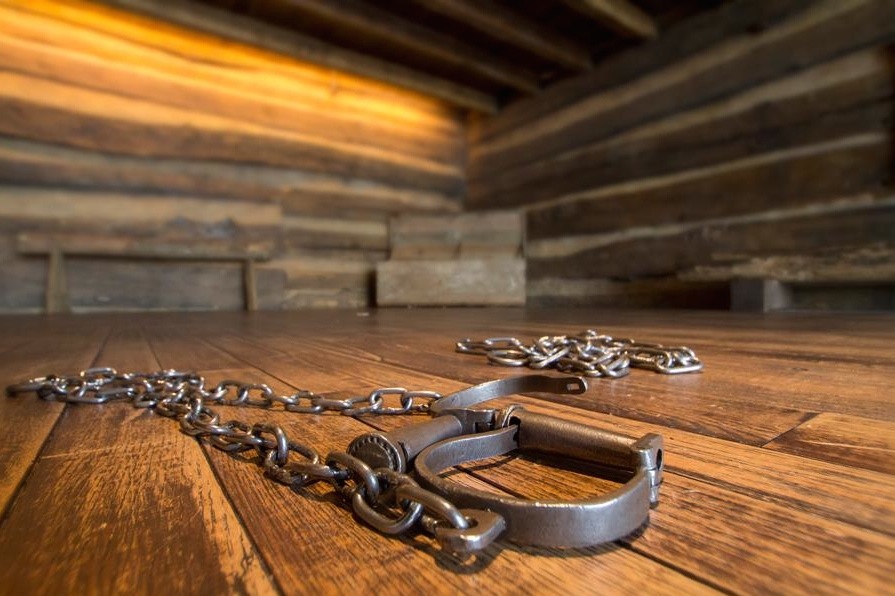-
 Early in my Design Thinking journey, I realized human-centered design could apply not only to users but also to us as the designers. Empathy can lead to better products and better work environments.
Early in my Design Thinking journey, I realized human-centered design could apply not only to users but also to us as the designers. Empathy can lead to better products and better work environments.I carefully crafted innovation processes to gain inspiration from those we served and account for how the team experienced the work.
After years of practice, however, a pivotal moment came when I realized human-centered design could actually be an expression of our humanity. Beyond understanding each other’s perspectives, we could reflect on our collective journey as humans. To drive true innovation, I could blur the line between designer and user and create the space for us all to advance our human potential.
This happened during my Executive on Loan assignment to the National Underground Railroad Freedom Center. Renowned design firm IDEO had agreed to work with the museum on a concept for a self-guided tour that would leverage the latest sensory technology.
A team from Boston was formed to lead a “design sprint.” They would fly into Ohio for a day – tour the museum, interview a few staff – and fly back. After roughly a week of prototyping ideas in a lab, they would emerge with final concepts.
I kept saying to the museum’s president, Dr. Newsome: we need more than a tour. We need them to see this place. We need to invite them into fellowship. That word kept coming to me, and I wasn’t even sure what it meant.
The Freedom Center is a human rights museum that explores the history of the Underground Railroad and the ongoing fight for freedom. Its mission is to reveal stories about freedom’s heroes, challenging and inspiring everyone to take courageous steps for freedom today.
One of the hallmark exhibits is a historic slave pen – extremely rare, since we have mostly torn them down in the U.S. This pen belonged to a slave trader in Kentucky, and countless men and women passed through its doors.
As I planned IDEO’s visit, I sensed it needed to start there. And, I knew it had to start with a story that transcended time and demonstrated the complexity of human nature. It had to start with Eddie.
The day IDEO arrived, we went to the Slave Pen and Eddie was waiting for us. Eddie has been on staff at the Freedom Center since it opened and knows the place better than anyone. He began in character, re-enacting the story of a Black man being kept in the pen on his way to a plantation in the South. He was getting ready to run, to escape on the Underground Railroad.
In modern times, we often romanticize the Underground Railroad as being the sole endeavor of Quakers and pious white women in the North. While those abolitionist groups played a role, a lot of the Underground Railroad was made up of Black people. Slaves aided each other to escape – sometimes they bought their individual freedom and came back for their families – and oftentimes Black men simply picked up and ran.
As Eddie ended his story, he took off his costume. Standing there, still a Black man, he pointed to an engraving over the door. “You see what that says?” The team looked up and read out loud, “J.W. Anderson.”
“Do you know who that is?,” Eddie’s eyes glimmered. One of the IDEO team members guessed correctly, “the slave trader.” “Yes,” the air stilled in Eddie’s long pause, “and my great-grandfather.”
We stood there silent and together. Suddenly, it wasn’t about other people’s stories or telling stories to other people. It was about our own stories. The experience of the Freedom Center is about honing your own moral perspective against the perseverance of the human spirit amid the intricacy of circumstance.
The product IDEO would create was not a self-guided tour. The product was the opportunity to reflect, to understand how our society came to be, to prompt thoughts about our own identity. That was what we needed to experience ourselves so we could create that experience for others.
The word fellowship came back to me, and I understood it. My work is to understand the connectedness of the human experience, to illuminate what we have in common. Empathy is not just walking in someone else’s shoes, it’s as my mentor John Pepper says, “seeing myself in that person and that person in myself.”
Design is not about coming up with solutions or processes for others but for ourselves. There is no other. We are all part of the systems we are trying to change. We are all part of the end product we create.
The IDEO team went back to Boston and delivered some of the most amazing design work ever done for the Freedom Center. The final concept was an interactive storytelling tour that began in the slave pen.
Visitors could navigate the Freedom Center with different character guides – including a young boy living on a plantation, an enslaved woman, a Black man about to escape, and even a White slave trader.
The team spent days researching historic texts to create composite characters. One designer was so compelled that she insisted on voicing the female character even though professional actors were at the ready. As we shared the concept with staff, they were moved to tears, often just uttering a soft “they get it.”
I will always remember when the Design Director at IDEO said, “this is the most engaging project since I’ve been at IDEO,” and another designer added “this is the most meaningful project I’ve worked on.” We weren’t just creating a tour, we were taking our place in the movement as freedom’s heroes.
That was the moment I saw myself as human in human-centered design. We do our best work when we give ourselves over to it entirely, when we seek to create change not only in our users but also in ourselves.
This post was originally published on Rachel’s blog Inspired Strategy.
Photo of shackles in Slave Pen, by Ronny Salerno of Queen City Disco(very)
.
Becoming human through human-centered design




2 Responses and Counting...
Thank you, Rachel, this is a very beautiful story of true human (not process, product or tech) centered design. This quote: “We are all part of the systems we are trying to change. We are all part of the end product we create.” nails it.
Thanks, Hannah. Amazing to find that the product and processes are just artifacts in a greater human experience.